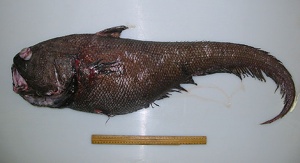 Weird Stuff
Weird Stuff  Weird Stuff
Weird Stuff  Our World
Our World 10 Ways Your Christmas Tree Is More Lit Than You Think
 Movies and TV
Movies and TV The 10 Coolest Stars to Set Sail on The Love Boat
 History
History 10 Things You Didn’t Know About the American National Anthem
 Technology
Technology Top 10 Everyday Tech Buzzwords That Hide a Darker Past
 Humans
Humans 10 Everyday Human Behaviors That Are Actually Survival Instincts
 Animals
Animals 10 Animals That Humiliated and Harmed Historical Leaders
 History
History 10 Most Influential Protests in Modern History
 Creepy
Creepy 10 More Representations of Death from Myth, Legend, and Folktale
 Technology
Technology 10 Scientific Breakthroughs of 2025 That’ll Change Everything
 Weird Stuff
Weird Stuff Ten Bizarre Facts About The Doge Meme
 Our World
Our World 10 Ways Your Christmas Tree Is More Lit Than You Think
 Movies and TV
Movies and TV The 10 Coolest Stars to Set Sail on The Love Boat
Who's Behind Listverse?

Jamie Frater
Head Editor
Jamie founded Listverse due to an insatiable desire to share fascinating, obscure, and bizarre facts. He has been a guest speaker on numerous national radio and television stations and is a five time published author.
More About Us History
History 10 Things You Didn’t Know About the American National Anthem
 Technology
Technology Top 10 Everyday Tech Buzzwords That Hide a Darker Past
 Humans
Humans 10 Everyday Human Behaviors That Are Actually Survival Instincts
 Animals
Animals 10 Animals That Humiliated and Harmed Historical Leaders
 History
History 10 Most Influential Protests in Modern History
 Creepy
Creepy 10 More Representations of Death from Myth, Legend, and Folktale
 Technology
Technology 10 Scientific Breakthroughs of 2025 That’ll Change Everything
Top 15 Unusual Deep Sea Creatures
The deep seas are often considered to be the last great, unexplored regions on Earth. Every year hundreds of hitherto unknown creatures are discovered ranging from tiny crustaceans to monster fish, and hundreds, even thousands, remain hidden awaiting our cameras. Here are 15 of the most unusual deep water denizens.
15. Ocean Sunfish
The ocean sunfish (Mola mola) is the heaviest bony fish in the world, with an average weight of 1000 kilograms. The species is native to tropical and temperate waters around the globe.
14. Megamouth Shark
This shark is an extremely rare and unusual species of deep water shark. Discovered in 1976, only a few have ever been seen, with 39 specimens known to have been caught or sighted as of 2007 and three recordings on film. Like the basking shark and whale shark, it is a filter feeder, and swims with its enormous mouth wide open, filtering water for plankton and jellyfish.
13. Chimaera
This strange cartilaginous fish uses its long snout to scan over the sea floor for the electrical impulses of its prey that bury in the muddy sea floor, just like a metal detector.
12. Fangtooth
This fish, also called an ogrefish, while understandably named for their disproportionately large, fang-like teeth and unapproachable visage, are actually quite small and harmless to humans: the larger of the two species, the common fangtooth, reaches a maximum length of just 16 centimetres (6 inches); the shortthorn fangooth is about half this size.
11. Pelican Eel
The pelican eel’s most notable feature is its enormous mouth, much larger than its body. The mouth is loosely-hinged, and can be opened wide enough to swallow a fish much larger than itself. The pouch-like lower jaw resembles that of a pelican, hence its name.
10. Blue-Ringed Octopus
The blue-ringed octopus is the size of a golf ball, but its venom is powerful enough to kill humans. There is no known antidote.
9. Viperfish
With a fearsome grin fit for a movie monster, the viperfish is a real-life predator that lurks in one of the world’s most remote locations.
8. Grenadiers
This large species has a rounded head and a mouth which faces forward to catch squid and fish that swim up off the sea floor. As in most other rattails, the males of this species have a special drum machine on their swim bladder that is used to attract females.
7. Vampire Squid
The Vampire Squid is covered entirely in light-producing organs called photophores. The animal has great control over the organs, capable of producing disorienting flashes of light for fractions of a second to several minutes in duration.
6. Glass Squid
With its polka-dot mantle and wide-eyed expression, this glass creature represents a lighter side of the inky ocean deep.
5. Giant Squid
The elusive giant squid, known to science as Architeuthis dux, is one of the world’s largest animals, reaching a length of up to 60 feet. It is the largest known invertebrate in the world.
4. Giant Isopod
These creatures are thought to be abundant in cold, deep waters of the Atlantic and Pacific Ocean.
3. Football Fish
The species holds pride of place as the first deep-sea angler ever found. The original specimen washed ashore in Greenland in 1833; at 22 inches long, it is still the largest one on record. Since no females of this species have ever been found bearing parasitic males, biologists assume they are fertilized by free-swimming mates.
2. Pacific Blackdragon
Female blackdragons are about two feet (61 cm) long and have fanglike teeth and a long chin whisker. The males are small, about three inches (8 cm) in length, and brownish in color. They have no teeth, no chin barbel and no stomach. Unable to eat, the male lives only long enough to mate.
1. Amphipod
The unusual animal, called Phronima, an Amphipod, is one of the many strange species recently found on an expedition to a deep-sea mountain range in the North Atlantic.






















